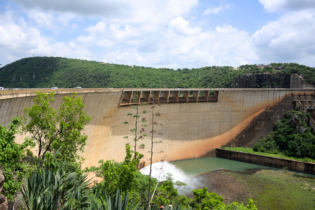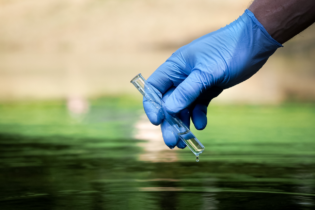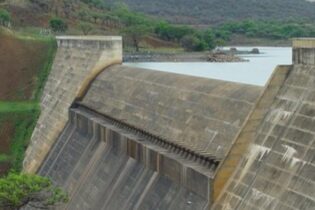The Ogagweni community has finally won its battle for clean water, according to Sibusiso Mjwara, head of the Municipal Infrastructure Grant at the uMgungundlovu District Municipality in KwaZulu-Natal.
“The uMgungundlovu District Municipality is bringing clean water closer to the people.The days of walking long distances to collect water in 20 ℓ bottles will soon come to the end for the Ogagweni community,” says Mjwara.
The Ogagwini Community Water Supply Scheme is situated in the Mkhambathini Local Municipality (KZ 226), which is in the extreme south of the uMgungundlovu District Municipality boundary, south of the Provincial Road 21, approximately 1 km west of Umbumbulu. The project is approximately 30 km2 in size. The northern footprint of the project abuts the Durban Metro boundary and the east side of the project abuts Ugu District Municipality.Project priorities
According to Mjwara, the aim of the project is to provide the community with a stable supply of potable water, create employment opportunities, training and transfer professional skillsto the local community.
Kantey and Templer Consulting Engineers were appointed by the uMgungundlovu District Municipality to design and implement the contract for Phase 1 and 2 of the project. Hydrotech was the contractor appointed by the municipality for the construction of Phase 1 and Icon Construction for the construction of Phase 2.
Broadly unpacking the project specifics, the Ogagwini Community Water Supply Scheme sources bulk water from the Eston/Umbumbulu bulk pipeline (Umgeni Water pipeline), which is located on the northern border of the project footprint. Water from an existing bulk supply line supplies all the reservoirs via a 150 mm steel pipe. From the source bulk line, two separate chambers are provided for Umgeni Water and uMgungundlovu District Municipality to monitor the volume of water supplied. Mjwara notes that Phase 1 reservoirs have a capacity of 350 and 750 Kℓ, with both feeding to 47 km of domestic reticulation, ranging in size from 32 to 250 mmdiametersand 124 stand pipes.Phase 2 reservoirson the other hand have a capacity of 300 , 100 and 75 Kℓ, all feeding to 61 km of domestic reticulation,rangingfrom 32 to 160 diameters and 144 stand pipes. “The reservoirs are constructed with a reinforced concrete roof covering to prevent contamination and evaporation of the stored water. The storage reservoirs are provided with a scour valve and scour chamber to facilitate removal of the reservoir contents for cleaning and maintenance purposes. The level of water in the storage reservoirs is controlled by a Bermad valve. “High -evel chambers have been constructed at the reservoir to maintain pressure from the bulk line and then be able to feed future stands pipes that are higher or at a similar level than the storage reservoirs.”Water from the storage reservoirs is gravity fed via the network of different types and size piping to feed the project area. Isolation valves are provided at the entry and exit of the reservoir for maintenance purposes.
Mjwara adds that a security fence with a double opening gate for vehicles has been erected around each reservoir to prevent acts of vandalism and/or theft.Training focus
As with most projects of a similar nature, training is a key focus. According to Mjwara, beside the ISD capacity building workshops and training of the PSC members, an accredited skills development training course was held on-site, where local community members were selected based on their education, employment and poverty level. “In each phase, atotal of 10 people from the community were trained, varying from plumbing, pipe laying, concreting and steel fixing. In addition, two student technicians were also appointed in each phase, which enabled them to gain practical experience in the engineering field. “This contract was operated under the auspices of the Expanded Public Works Programme (EPWP), and as such the majority of the tasks were undertaken using labour intensive methods on a task work basis. Unskilled labour was employed from the local community, with an emphasis on gender and youth equality, ”states Mjwara.“This project has created employment opportunities for the community. Skills were imparted to the local community through active participation in the construction and management of the project through various employment opportunities. The project reduced unemployment and assisted in promoting local emerging contractors.”
Enjoying the benefits
The days of using river water for domestic use are long gone for some part of the Ogagweni community since the completion of Phase 1 earlier last year. “The remaining parts of the community will soon be enjoying the benefits of this project as we are now focusing on Phase 2, which will be completed at the end of March 2013.
“The Ogagwini Community Water Supply Scheme has assisted in creating an infrastructure that will cater for the basic needs of the community. It is envisaged that this will promote the growth of economic activity within the community,” concludes Mjwara.





